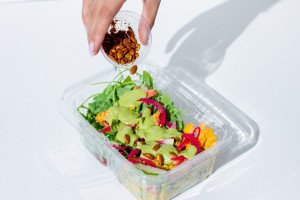How to Plant a Vegetable Garden: A Guide for the Green-Thumb Impaired
Fact #1: there’s nothing better than enjoying freshly grown produce from your backyard on a relaxing summer night. Fact #2: achieving a garden that yields anything resembling edible produce is harder than it looks. I should know—I have the world’s least green thumb. Even still, year after year I find myself investing in the latest gardening gear, promising myself that this time it’s going to be a success. (Sigh. It never is.)
That’s why this year I decided to take things up a notch by reaching out to a local expert to get some professional tips. I talked to Sally McCabe from the Pennsylvania Horticultural Society to get real answers to all the nitty gritty questions of vegetable gardening. Check out what she has to say below, and mark my words, Be Wellers, 2013 will be the year of my first flourishing vegetable garden.
What are the benefits of starting your own vegetable garden?
You have total control so you can grow exactly what you want. You’re not at the mercy of what’s at the market.
What are some of the easiest plants to grow in our area?
All the tropicals do well, as long as we get enough rain. Tomatoes and peppers are probably the easiest because it’s really hard to kill them and you generally start them from a plant rather than from speeds, which gives you a jump start. They’re also easily available, and they love the Philadelphia heat. Eggplants and beans are really easy, too. All of your squashes are a bit harder because of the bugs that we have in our area.
What specific tips do you have for gardeners in the Philly area?
Each season has its challenges, and we need to work around those challenges. If we are starting around summer, you have to take the heat into consideration, as well as the amount of rain we are getting and the bugs. As summers are getting hotter, we’ve had to learn to do things a little differently.
When is the best time to plant for the summer season?
May is perfect because it’s not ridiculously hot yet. After May it gets too hot and then the rain gets unreliable.
How much space is needed for a garden? Is it possible for those of us with tiny backyards?
We encourage people will small backyards to grow things in containers. I use to live on Poplar Street and had a backyard that was about as big as your eyeball so I had pots in front of my house because I wanted to continue to grow. The biggest bang for your buck, if you don’t have a lot of space, is herbs. You don’t have to wait for herbs to grow or get mature because you are mostly eating the leaves. For people who want to grow inside, herbs are good, too, but I wouldn’t bring my outdoor herbs inside—I would just start new plants.
How do you know when to start picking?
It’s different with each plant, but you get to learn when certain vegetables are ripe. If you are planting red tomatoes, the tomato will be red when it is time to pick it. With beans they look like beans when it’s time to pick them. It’s a little bit harder when you’re growing things under the ground because you can’t see them. So every once in a while you get impatient and you pull one up before it’s ready. But most times you can still eat them, they just won’t be as big as you might like.
What is the best way to transition between seasons?
The hard part is that climate change is really, really affecting our gardens. We used to have three pretty distinct seasons—early spring, summer and fall—but they aren’t as apparent anymore. Before, in order to get everything to ripen up while it was cool, you would have to get your stuff started in the summer. You would start your cabbage, cauliflower, broccoli and Brussels sprouts in July so they could start to get some size on them by late August or September. But now it is too hot to start them outside, so you have to start them indoors somewhere that they are protected from the heat.
What is the biggest mistake that gardening newbies often make?
The biggest mistake people make is worrying about what to plant. What they need to think about first before anything else is their soil. The soil is what makes it all happen. You can make anything grow if you’ve got the right soil. That being said, the soil that you start with should be really, really high in composts. Soil should be very alive. What I tend to see new gardeners do is go to Home Depot and buy a bag of Miracle Grow soil. While that stuff has lots of minerals and fertilizer in it, it is as dead as can be. So what you’ve got to do is make sure you add live soil. A good tip is to find somebody that is a good gardener and get a bucket of soil from them to add to whatever you have. If they’ve got a good garden going, then their soil has all the right micro-critters in it and it’s going to wake your soil up.


